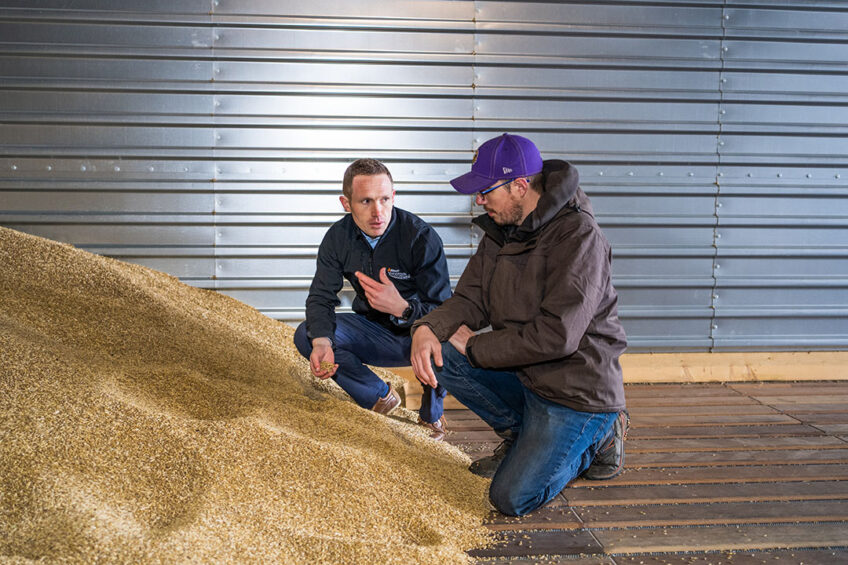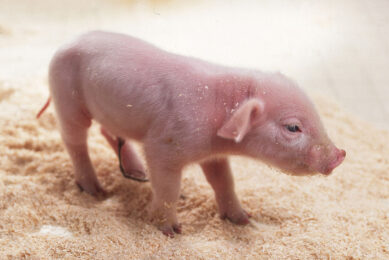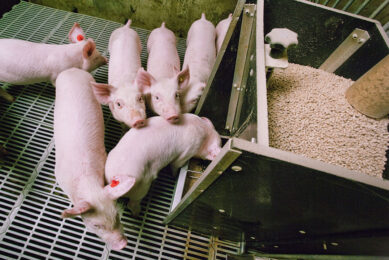Feeding solutions to tackle sustainability issues

Research has demonstrated that the use of livestock feeding technologies can lead to reduced carbon emissions, improved production efficiency, decreased land-use conversion and lower environmental impacts through reduced mineral and nutrient excretion.
The livestock industry plays a vital role in providing the nutrient-dense, animal-sourced foods needed to meet the nutritional requirements of the human population. As it works to meet the increasing global demand for animal protein, the industry is simultaneously tasked with tackling unique environmental, economic and social sustainability challenges. The future viability of the livestock industry will depend on how the sector leverages technology and innovation to find solutions to these unprecedented sustainability concerns.
Research has shown that one of those solutions is the use of feeding technologies, such as slow-release urea, antioxidants, mycotoxin binders, enzymes and chelated trace minerals. These solutions were developed to improve the productivity and profitability of animal production, but some have been proven to have positive impacts that transcend these primary benefits.
Global animal health leader, Alltech, has been developing nutritional technologies for over 40 years. The company believes that science-based solutions can help ensure sustainable nutrition for the global population. That’s the vision behind its mission of Working Together for a Planet of Plenty: uniting the agri-food community to create a world where there is enough nutritious food for all, the world’s resources are responsibly managed, and all living things thrive.
Alltech’s research team has pioneered the combined use of meta-analyses, life-cycle assessments (LCA) and simulation modelling to substantiate how the impacts of feeding technologies in improving production efficiency can be translated to lower environmental impacts.
The research is clear: Feeding technologies can help reduce the carbon footprint of dairy and beef farming, improve poultry and pig production sustainability, and help rid animal diets of toxins that can harm both the animal and the environment.
HERE’S A LOOK AT SOME EXAMPLES:
– Reducing the carbon footprint
Utilising those three research methods, innovative feeding technologies such as Optigen (non-protein nitrogen) and Yea-Sacc (live yeast) were shown to substantially enhance both the profitability and sustainability of dairy and beef production.
A meta-analysis showed that the use of the non-protein nitrogen technology improved the efficiency of milk production while simultaneously reducing nitrogen excretion and the carbon footprint of the operation. A subsequent simulation analysis highlighted that feeding the non-protein nitrogen to 1,000 dairy cows would increase profitability by USD$ 18,000 and reduce the footprint of the herd by 647 tonnes of CO2e.
In beef cattle, a recent meta-analysis showed that Yea-Sacc improved rumen function, resulting in significantly improved growth rates, feed efficiency and carcass weight. A simulation analysis was conducted on feeding the live yeast to 100,000 cattle to gain 400 kilograms of liveweight. The result: Carbon emissions were reduced by 13,200 tonnes of CO2e, the equivalent of taking 8,267 cars off the road.
– Improving sustainability
Several case studies highlight the sustainability performance of feeding technologies in poultry and pigs. In a meta-analysis of laying hens, Bio-Mos, Alltech’s proprietary yeast mannan oligosaccharide, increased hen-day production and livability and decreased the feed conversion ratio (FCR). Enhanced egg quality also was observed.
This improved performance implies that about 27 tonnes less feed would be required to produce 1,000 tonnes of eggs, equivalent to 5.6 hectares of the land saved from soya cultivation. A simulation analysis highlighted that it also decreases greenhouse gas emissions by 1.5%.
In a meta-analysis of broilers, Bioplex, Alltech’s proprietary chelated trace minerals, has been proven as an effective tool for reducing and replacing the levels of inorganic trace minerals in broiler diets by 33 to 50%. Broiler performance was also improved: Average daily gains (ADG) increased, while mortality and feed conversion ratios (FCR) declined. Feeding chelated trace minerals resulted in lower environmental impacts through the significantly reduced excretion of zinc, manganese, copper and iron.
A simulation of feeding chelated trace minerals to one million birds to reach a market weight of 2.5 kilograms showed a carbon reduction of 171 tonnes of CO2e, a savings equivalent to 112 fewer cars on the road or the amount of electricity used by 115 houses.
Research has shown that maximising the nutritive value of poultry feed with multiple exogenous enzymes, such as Alltech’s Allzyme Spectrum, leads to more efficient poultry production. When enzymes are added, the amounts of certain feed ingredients included in the poultry diet can be reduced, leading to cost savings and minimising the amount of land, water and energy used to produce those ingredients. Supplementing multiple enzymes in poultry diets will help animals digest, absorb and utilise energy and nutrients, improving performance and reducing the amount of nutrients excreted into the environment.
Researchers found that enzyme supplementation resulted in the reduced excretion of nitrogen compounds, undigested protein and phosphorus in the manure. It also reduced the presence of unfavourable microorganisms in excreta and improved the digestibility of nitrogen compounds for broilers and layers.
The positive effects of Actigen, a yeast mannan-rich fraction (MRF) from Alltech, on gut health have been shown to improve pig production, welfare and sustainability. In a meta-analysis, supplementation of MRF in basal diets increased the herd’s ADG, livability and FCR.
Simulation results showed that those improvements could decrease the time to slaughter by three days. This could reduce nitrogen and phosphorus excretion by 2% and 3%, respectively, and reduce carbon emissions from producing 100,000 pigs by 1,207 tonnes of CO2e.
– Reducing mycotoxins
While mycotoxins cause economic losses, either from poor feedstuff quality or reduced farm output, they also impact the carbon footprint of livestock operations. A recent meta-analysis by Weaver et al. (2022) looked at this topic in more detail. The analysis of 25 broiler studies demonstrated the impact of mycotoxins on productivity and subsequent environmental sustainability while also highlighting how the dietary inclusion of a yeast cell wall extract (YCWE) such as Mycosorb could ameliorate some of these impacts.
The study found that across 100,000 broilers, mycotoxin consumption could increase emissions by 46.62 tonnes CO2e, mainly due to poorer feed efficiency and greater bird mortality. Including YCWE during a mycotoxin challenge significantly improved both FCR and mortality rates. Using an LCA to simulate the effects of these productivity improvements, the inclusion of YCWE was shown to reduce emissions by 25.41 tonnes CO2e per 100,000 birds compared to feeding a mycotoxin-contaminated diet on its own.
Looking to the future
Feeding technologies can provide sustainability benefits that can be aligned with several of the United Nations’ Sustainable Development Goals. Although more research is needed, evidence appears to suggest that nutritional solutions for enhancing animal productivity can also be a tool to help reduce carbon footprint and meet sustainability goals.
 Beheer
Beheer





 WP Admin
WP Admin  Bewerk bericht
Bewerk bericht